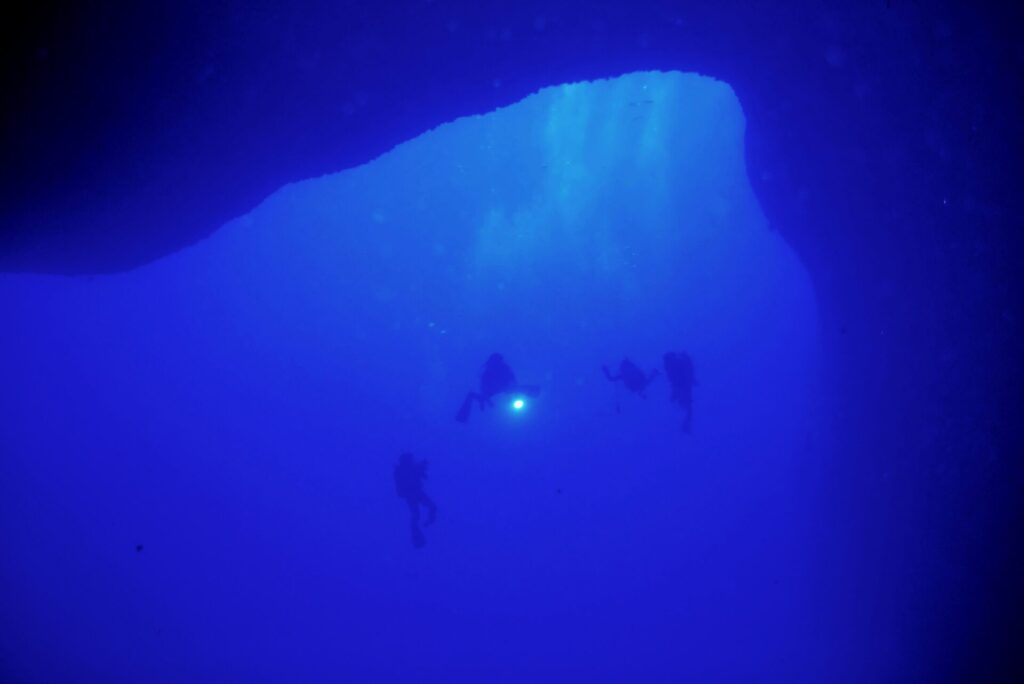Tōri-Ike (Passage Pond)

A 40~50 minutes boat ride to the west from the Hirara port on Miyako Island will take you to Irabu Island1, and you will also find Shimoji Island along its border as if it were a part of it.
The west coastline of this Shimoji Island is a series of sheer cliffs. Here you will come upon the most well-known diving spot in Okinawa, Tōri-Ike (Passage Pond)2.
As you make the entry from the boat at the front of the cliff, you will see an arch (a large pit in the cliff) twenty meters wide in the sea. That is the gate from the sea to the Tōri-Ike. In fact, this undersea opening is the one and only approach to the pond, given that access from the land is extremely difficult. In other words, the Tōri-Ike is a pond of fresh water sitting in a rocky tract near the ocean, of which the bottom is connected to the sea.
Pass through this arch from the sea and you will enter the bottom of this Passage Pond. You may see dogtooth tuna, shrimp scad, or even sharks sometimes, for that area is still in seawater. There are also large schools of pyramid butterflyfish, and a few Luna lionfish inhabiting the rock arch.

During the leisurely ascent from the bottom of the pond, the color and temperature of the water will change gradually. From a certain level, you will notice a milky-white spring haze trailing layer called the thermocline.
This cloudy layer is where the seawater and freshwater meet, dusted with remains of plankton. The passage through this layer feels wondrous, like no other. As the view dims white and the temperature changes, you will be entranced by the sensation of being swallowed in a supernatural world.
Once you exit the thermocline, the water will suddenly turn cold. That is the world of freshwater. Soon, you will rise to the surface of the pond, and divers will appear one after another in the middle of this pond surrounded by rocks tough to climb (though, beginner divers who don’t want to go back the way they came have no other choice but to claw up this wall).
During usual diving, the temperature is higher closer to the surface and lower in the deep. However, in the Passage Pond, the upper side is colder.
In an age when the art of diving did not yet exist, I wonder how did they find out this passage from the bottom of a pond to the sea? Someone might have fished with a very long fishline, caught a dogtooth tuna, and then people would have been very excited that wow, this pond goes through to the sea!
Editor’s Note:
- In 2015, the Irabu Bridge (3540 meters long) connecting Miyako Island and Irabu Island was constructed. The longest in Japan for a bridge that does not require a toll.
- In 2006, the pond was designated as a natural monument and a place of scenic beauty by Japan, under the name of “Tōri-Ike of Shimoji Island.”








































































































































































































































